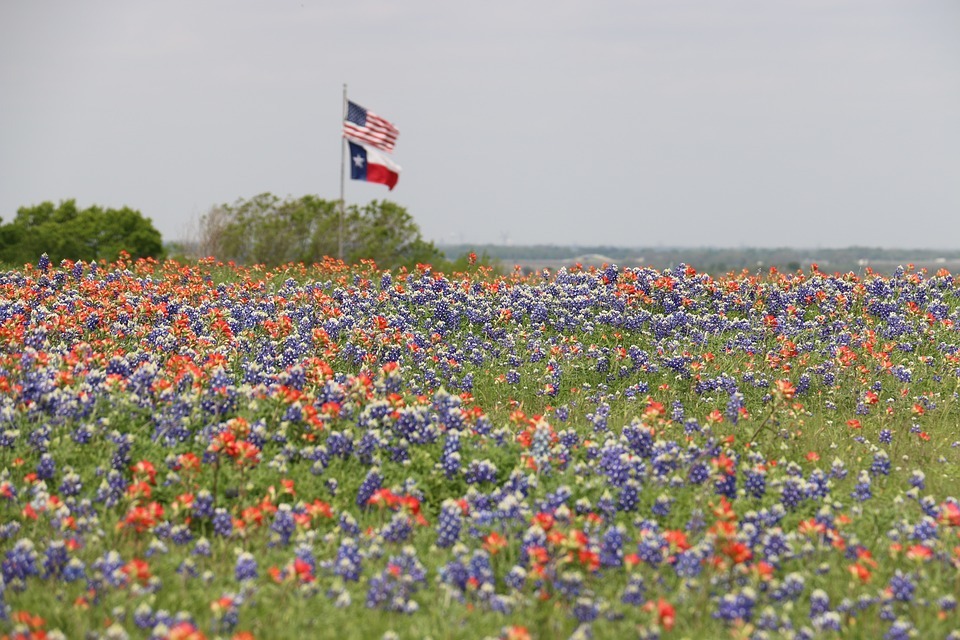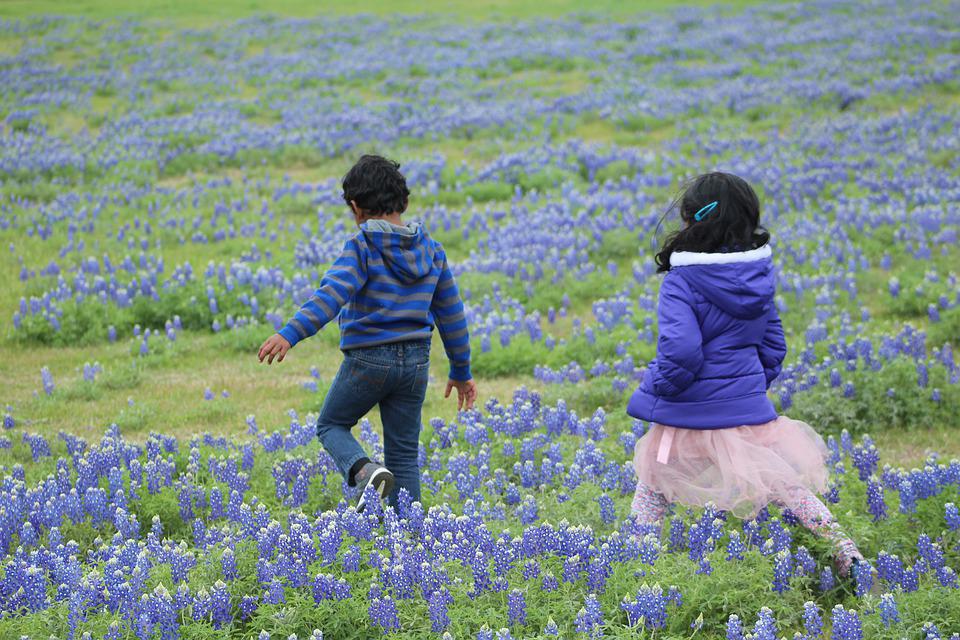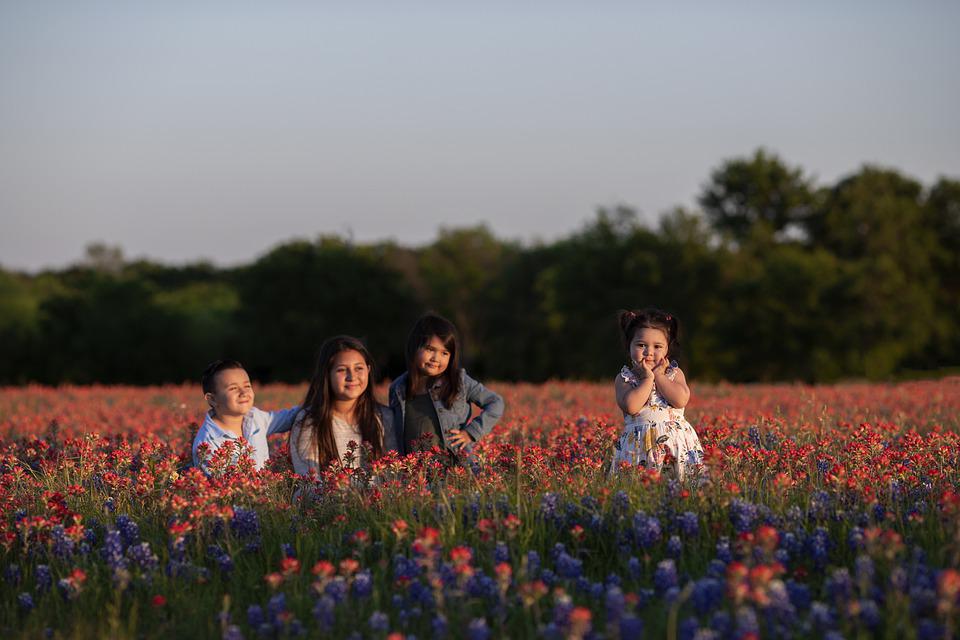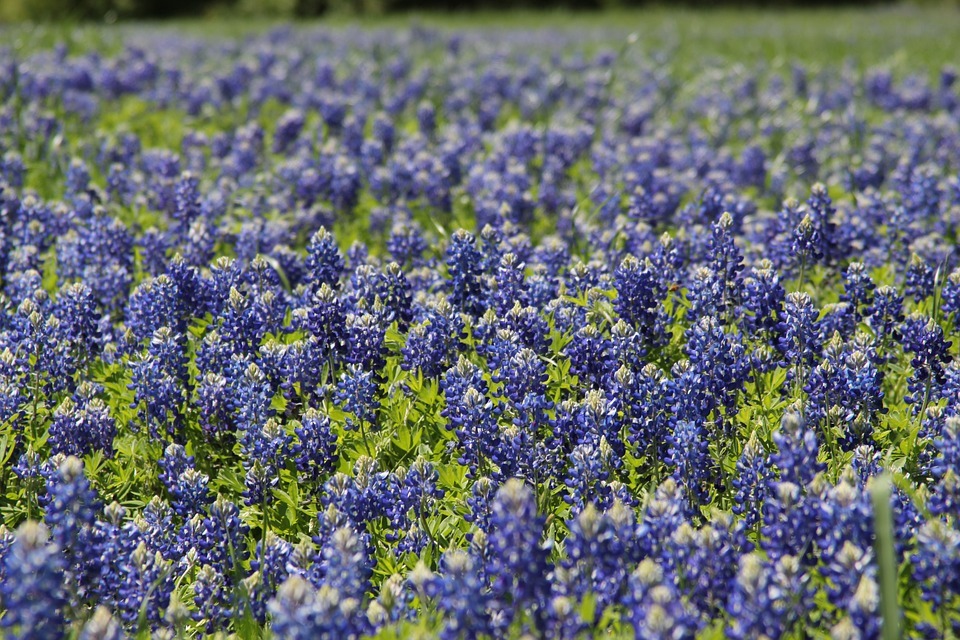Spring has always been the best season, second to summer; it is during this time that flowers start to bloom as if waking up from a long slumber during winter. Each spring, Texas roads, and backroads are blanketed in thousands of bluebonnet blossoms. The stunning wildflowers enchant those who visit Big Bend National Park and the Texas Hill Country, and passersby often capture photos of themselves among fields of purple blooms.
Just like the Pecan tree, the Bluebonnet is one of the most known symbols of Texas, named because of its resemblance to the sunbonnets worn by women to protect themselves from the hot sun. Many spring photos feature children dolled up for Easter Sunday, posing in a field of bluebonnets. The Bluebonnet is undoubtedly the most popular wildflower in the United States. However, few people can tell the truth from fiction when it comes to bluebonnet myths, tales, and history—and how they keep returning year after year to the joy of locals and visitors alike.
The Amazing Stories Behind the Bluebonnet
The Bluebonnet, scientifically known as Lupinus texensis, was recognized as Texas’ official flower by the state legislature in 1901. The bright sapphire blue petals, also described as the buffalo clover, wolf flower, and “el conejo” or “rabbit” in Spanish, are thought to resemble the bonnets colonial ladies wore to protect themselves from the sun. If you’re in central or southern Texas, you’ll see fields and roadsides dotted with bluebonnets in mid-to-late April. They’re easy to recognize since their cores are usually covered with yellow or white spikes, and the plant can reach up to a foot tall.
Texas bluebonnets have a long history of folklore surrounding their origins. It has long been rumored that Spanish explorer brought the flower to Texas. According to legend, the explorers received the seeds as a good luck charm from the priests of the Holy Land. These Spanish explorers, some say, may have enticed rebellious Native Americans with the seeds to get them to cooperate with them. However, most historians believe this story to be inaccurate; they contend that even though bluebonnets originated in Europe, any bluebonnet-like flower introduced to the U.S. would look different than the Texas native one.
Moreover, the Jumano Indian’s version has a more ethereal perspective on the bluebonnet mythology. The Jumano Indians recall when Christian missionaries traveled to New Mexico and Texas, bringing the gospel to the native peoples. According to the Jumanos, they saw several visions of an elderly nun clad in cobalt-blue clothing. It was as though she came to them in their sleep and shared the good news of Christ with them. The following day, they woke up to a beautiful field of blue flowers that perfectly complemented the nun’s dress.
Another myth concerning the national wildflower is that of the uncommon pink Bluebonnet. Pink bluebonnets are said to symbolize the blood that was lost during the Alamo battle. According to folklore, pink bluebonnets are said to bloom along the San Antonio River and the legendary mission where so many Texans died fighting for their country’s independence from Mexico.
How Did Bluebonnet Become a State Flower of Texas?
The Lupinus subcarnosus was the first official state flower of Texas. Coastal and southern Texas are the best places to find this type of Bluebonnet, which is smaller and less noticeable than its larger counterparts. The Texas Legislature chose the Bluebonnet in 1901 when they were looking for a flower that best reflected their country. To honor the numerous pioneering Texas women who came before them, the National Society of Colonial Dames of America persuaded Texas lawmakers in 1901 to rename the Bluebonnet in their honor.
The cotton plant was the first flower to be nominated since cotton is a symbol of Texas’s economic independence and progress. Cactus Jack, a legislature member, selected pear cacti for their hardiness and strength soon after. Since the other contenders were so unflattering, the National Society of Colonial Dames of America pushed forward the Bluebonnet. On election day, they decorated legislators’ desks with bluebonnet-themed floral arrangements and displayed paintings of the flowers on the floor of the assembly. The startling beauty of the bluebonnets was enough to sway the voters.
Lupinus subcarnosus was originally picked but was the least attractive Bluebonnet. Therefore, in 1971, the legislature settled the controversy by making all bluebonnets the state flower. They solved the dilemma by establishing laws that all bluebonnet species that appear would be the state flower. Today, this comprises Lupinus subcarnosus, Lupinus texensis, Lupinus havardii, Lupinus concinnus, Lupinus plattensis, and Lupinus perennis.
Interesting Facts About Bluebonnet
1. Bluebonnet naturally grows on Texas roadsides.
The 1917 Texas Department of Transportation discredits this misconception. Bluebonnets were one of the first plants to emerge along roadsides after construction. The Texas Department of Transportation used these hardy plants to beautify highways and prevent erosion. In 1932, they hired landscape architect Jac Gubbels to spread Bluebonnet along Texas roadways. As a result of Gubbels’ efforts, the department avoids mowing Texas roadsides until after wildflower season to support the establishment and flourishing of optimum growth and development of the Texas National flower along the Texas highways. Each year, the Texas Department of Transportation buys and sows 30,000 pounds of bluebonnets seeds to create beautiful fields along its roadways.
2. Bluebonnets are poisonous plants.
Bluebonnets are toxic if eaten. While the blossoms are lovely and delicate, there are hidden hazards. Both children and cats or other pets should avoid eating the flowers since they are harmful. Neurological impairment may result from blue-bonnet poisoning.
3. It is not illegal to pick bluebonnet flowers.
Since 1973, picking bluebonnets in Texas is no longer considered a violation of the law. In any case, taking plants from state parks is prohibited by both state and federal law. Taking the flower from someone else’s private property is, of course, against the law. A real Texan is aware that one should never “Mess with the Texas Bluebonnet”!
4. Bluebonnet is adaptable to the cold.
The bluebonnet plant benefits from the colder weather by having its root system built up, which results in a more vigorous, more robust plant that can produce more showy, bold, and larger blooms in the spring.
5. Bluebonnet is most abundant in Texas but is not exclusive to it.
Texas has both Lupinus Texensic and Lupinus Subcarnosis Bluebonnets, but it’s not the only state with bluebonnets. Florida, Louisiana, and Oklahoma may have the flowers since they need 8-10 hours of sunlight, alkaline soils, and low moisture. Texas has more bluebonnets than anywhere else in the world, blooming on roadsides, fields, streets, and in Texan gardens. However, one can acquire bluebonnet transplants if you give them plenty of sunlight and water when dry. If you’re lucky, they’ll return more colorful next spring.
Best Place in Texas Where One Can See the Most Beautiful Bluebonnets
Ennis, Texas, was declared Texas’ official bluebonnet city in 1997. One hundred thousand tourists visit Ennis annually to see 40 miles of bluebonnets. Although, it’s given that you’ll see bluebonnets blooming along Texas highways in the spring.
The gorgeous wildflowers of Chappell Hill, Texas, are also well-known, and the town organizes the annual Official State of Texas Bluebonnet Festival. It’s also worth visiting Burnet, Texas’s “Bluebonnet Capital,” which can be found on Highway 29, 60 miles north of Austin.
Bluebonnet gardens and paths might be too crowded in Ennis, Chappel Hill, or Burnet because they’re all famous for having the most beautiful and grandest bluebonnet displays. You can visit other bluebonnet gardens in Texas; ask the locals around. However, while enjoying the beautiful sites of bluebonnet fields, it’s essential to keep in mind your southern etiquette and not pick the blooms to preserve the beauty of Texas for generations to come.





